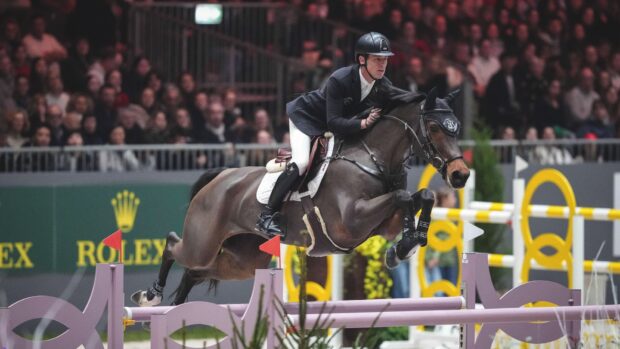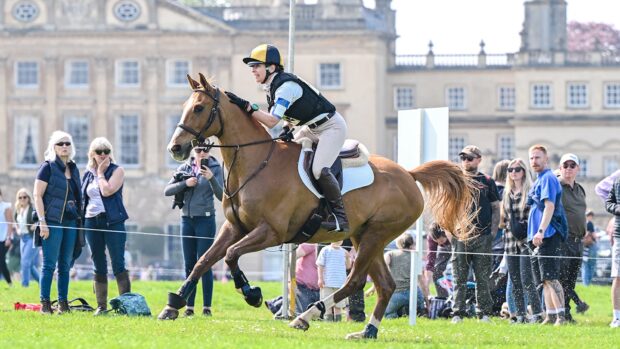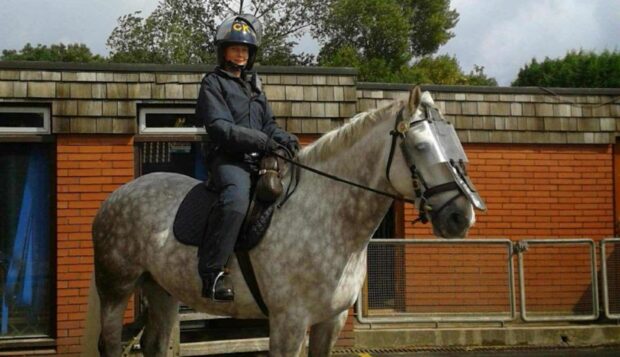A Fell Pony Heritage Centre is to be established in Cumbria after landowners agreed the use of a site in Tebay.
Low Borrowdale Farm is to host a “hefted” herd of 12 Fell ponies, and will promote the rare breed as well as creating a research facility to study the relationship between native ponies and their environment.
Lifelong Fell enthusiast and former agricultural lecturer Libby Robinson is behind the project, which she hopes will include displays of the ponies undertaking traditional tasks.
“It has always been a dream of mine to be able to help the Fell pony; I am very passionate about them as they are such a wonderful breed, strong and sufficiently up to height at 14hh to be useful,” she said.
“I used to run agricultural courses and we’d have them pulling chain harrows and timber snigging [removing felled wood] and I also worked at the Black Country Living museum in Dudley where they created a working carter’s yard. The Fell ponies would demonstrate the equipment, manoeuvring canal boats and showing how a working pony carted coal and tipped it. I hope it would be part of the heritage centre to keep these skills going”
The relationship between native ponies, their grazing habits and the biodiversity of their environments has become something of which ecologists are increasingly aware.
Breeders also appreciate the importance of “hefted” herds — those that graze a specific portion of land and develop genetic traits in response to their environment — in producing true-to-type stock.
Libby hopes the centre will give the opportunity for students to undertake further research in these areas, using the 334-acre farm which is “ideal Fell pony country”, occupying a range of 600ft-1000ft.
“I hope people will be able to study the impact of the Fell ponies on the fell and hopefully it will also become an advisory centre for hill farmers and give them a voice to explain what it is like to be part of the environment they live in,” she said.
“The centre will bring together all the amazing history that makes the pony what it is today, show what we did with it in the past and look at how to make a future for them.”
Unlike other British native breeds such as the Exmoor and Dartmoor, it has not been permitted to run stallions on the fells with the mares since the late 20th century, meaning population control has not been a critical issue.
There are currently just over 280 foals born worldwide every year and an estimated 83 mares on the Cumbrian fells.
Continues below…

Fell ponies risk extinction
Fell ponies are winning ridden mountain and moorland classes across the country and are favoured by the royal family but

Fell ponies provide ultimate ‘green’ transport
A team of 10 Fell ponies were used in favour of 4x4s to carry stone bags across a remote part

Cavalcade of Fell ponies turns out to honour The Queen
The society said forming the guard of honour was a 'once in a lifetime experience'
“We aren’t at risk of losing the Fell pony, so much as losing its habitat,” said Libby.
“It’s important to have a core pool of native ponies breeding pure-to-type because of their environment. It’s been proven genetically that if they are taken away from their place of original breeding, they will lose the genetics that make them what they are. Even three or four generations on, you will not be able to put back their lost ability to survive the conditions,” she explained.
“In the recent snow and that east wind that went through the north, there were groups of ponies up to 1,200 ft and they were happily coping as part of the environment with their own thermal blankets.”
The centre is expected to be open and running within the next two years.
For all the latest news analysis, competition reports, interviews, features and much more, don’t miss Horse & Hound magazine, on sale every Thursday.




